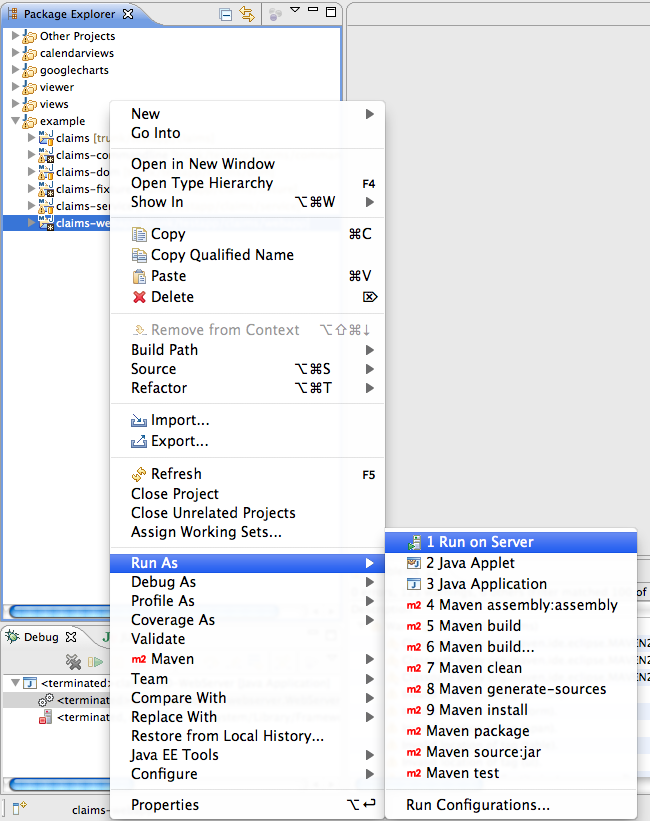The second approach for running a Wicket Objects application is to build a WAR archive of the webapp. Most IDEs will then allow this WAR to be deployed on an external servlet container, for debugging.
Starting with a Naked Objects application,
the WAR archive is most easily built using the
webapp project. In it you'll need to make the
following changes:
add the same
<dependency>s as were listed for the commandline project (see Section 3.2.1, “Adding Dependency to Wicket Objects Viewer”). Note that there's no need to add the<dependency>to Naked Objects'webservermodule, though.in
src/main/webappthere already be aweb.xmlwith entries for bootstrapping the HTML viewer. Replace the contents ofweb.xmlwith that used for bootstrap Wicket Objects (as shown in Section 3.2, “Running from the commandline project”)the two mandatory configuration files,
nakedobjects.propertiesandpasswordsneed to be in a location so that they can be read by the webapp. The easiest approach is to copy them from theconfigdirectory to the root classpath (egsrc/main/resourcesin thewebappproject)
You should then be able to build the webapp and deploy. For example, in Eclipse this is done by Run As > Server:

and then select the external servlet container to deploy against:

If deploying this way, then the web browser URL may be slightly different. For example with Eclipse the URL to specify is http://localhost:8080/webappname.